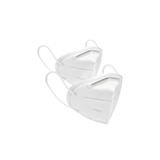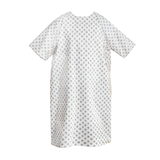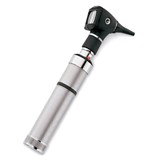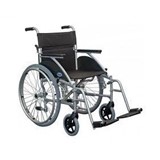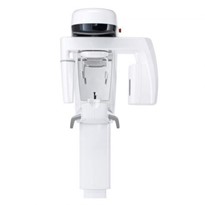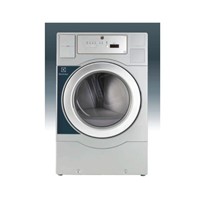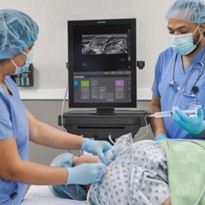Digital dentistry has well and truly arrived and is not merely a different way of doing the same thing, but rather a tool to facilitate the clinician expanding their scope of practice, improve their ability to truly practice preventative dentistry, dramatically improve patient flow efficiency and ultimately improve the bottom line. CBCT and 3D imaging has proven to be invaluable in implantology. It is now considered best practice to obtain a CBCT before placing dental implants and is an essential component for guided implant surgery. Furthermore, the use of CBCT has contributed noticeably to specialty fields such Endodontics, Periodontics, Orthodontics, and surgical extractions (particularly wisdom teeth) ultimately improving clinical outcomes and predictability.
What information do I want / need from a CBCT – FoV?
So, when choosing a CBCT, consider what type of dentistry you currently offer, and what you and or your associates plan to offer in the next 5-7 years – a CBCT is a 7–10-year investment! Do you or your associates do endodontics, dental implants, extractions, wisdom teeth, orthodontics, or any aspect of sleep apnea/airway analysis? All these factors influence the Field of View (FoV) required from your CBCT. Field of view defines the size of the volume that can be captured in a single scan. Each area or specialty will have a preferred FoV – for example, endodontics generally uses a small FoV 5x5 cm or less, and sleep apnea/airways analysis and some orthodontics require a 16 x 16cm FoV or larger. The main differentiations in CBCT machines are the size of the volume that can be captured in a single cycle and dose of radiation delivered for a given scan.
When considering CBCT devices and potentially comparing models, it is important to compare like for like remembering that the higher FoV is usually one of the biggest drivers of costs for a CBCT. Other factors that influence price can be the focal spot (this influences the level of detail – or image resolution) and the Xray tube power (that is the kV and mA output) as this also influences image quality and is particularly important when imaging dense bones and structures such as the TMJ, temporal bone and inner ear.
Radiation Dose
With CBCT, radiation exposure can be adjusted depending on the anatomy you are scanning. Within many sets of a scan, most CBCT systems offer multiple dose options such as; Low dose (Eco) Medium dose (Regular) and High dose (Best Quality). Some more advanced models offer more tiers at the higher end. It is important to note that lower dose scans, while important for pediatric patients, are often of a lower quality, and higher dose generates higher quality images. The decision then becomes a patient specific choice of balancing the dose against the desired image quality to successfully diagnose and create a treatment plan. Some more advanced systems offer further dose limiting features such as ‘Pulsed emission” and anatomy-adapted radiation exposure controls. Pulsed emission means the CBCT pulses radiation as it circumnavigates the head as opposed to exposing one constant beam – the result is a 60-70% exposure reduction. Anatomy-adapted exposure refers to the CBCT devices that assesses the patients bone density via an initial scout view and automatically regulates the radiation dose to maximize image quality and minimize patient exposure.
Where will it Fit?
Imagine the space you plan to allocate within your practice. Some CBCT’s vary significantly in size, and factors like adding a Lateral Cephalometric arm, can significantly increase the minimum required space. Most CBCT brands require the same amount of space as a traditional panoramic machine, so having both 3D and 2D capability adds no additional space requirements. Some CBCT machines are extremely compact and will fit in very small spaces and some allow for modular additions such as a Cephalometric arm. Consideration should be made for the option to expand as required.
How much do I want to pay?
CBCT machines provide a great return on investment. When you calculate the number of scans you would normally take, plus the additional cases you can now treat, plus the potential increase in treatment plan acceptance, the length of time to break even and to generate a positive ROI is surprisingly low. And an added benefit is patient workflow efficiency for those currently referring to 3rd party imaging centers.
As technology continually improves and choices increase, the cost of CBCT machines has become more affordable. So too has financing options, so if up-front payments are not feasible, investigate financing options. Most CBCT sellers offer financing.
And remember, when comparing models, FoV will generally influence the price of the CBCT with more options meaning higher pricing.
Installation Training and On-going Support
Time and ease of Installation and training on the machine are also important factors to consider. Question the experience and professionalism of the installation engineers and once installed, ensure that your team receive training on the machine. Training inclusion should be negotiated at time of purchase.
Some CBCT machines include on-going maintenance support packages whereas others offer this as an optional extra. It’s important to ensure immediate access to professional, available support as a non-functioning machine costs money when it cannot be used.
Focus on the key features that are important to your practice in making the right decision.



